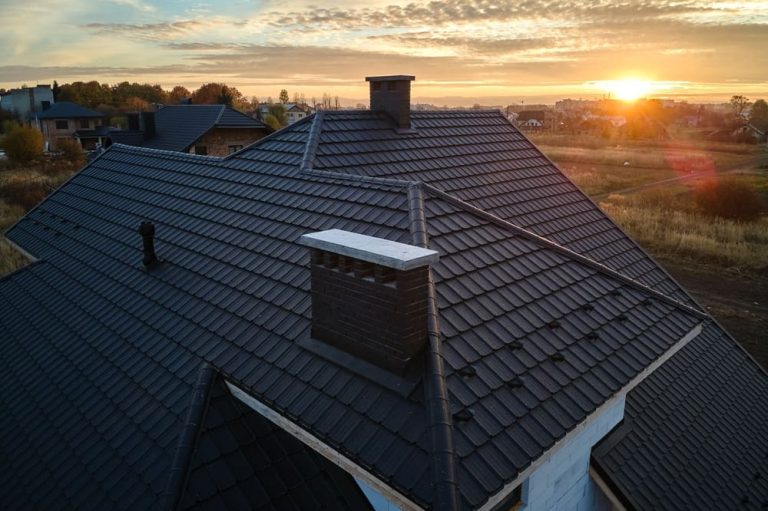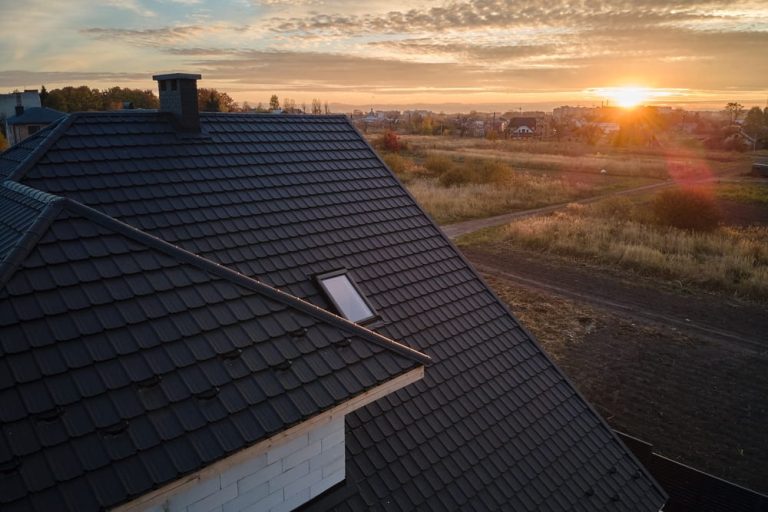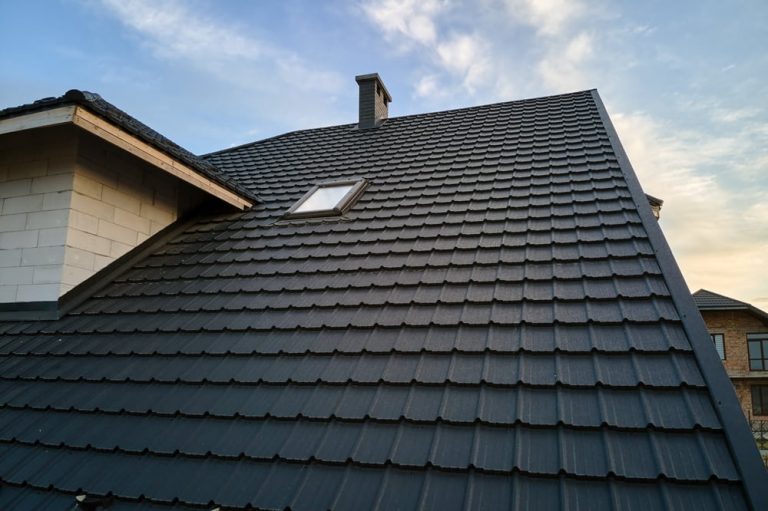High-quality synthetic roofing solutions can enhance the durability and longevity of your roof. In this article, we will explore the benefits, installation process, and maintenance tips of synthetic roofing. Whether you’re looking to replace your existing roof or build a new property, discover how synthetic roofing installed by our roofing company can be the perfect choice for your home.
Everything You Need to Know About Synthetic Roofing: Durability and Design Explored
Synthetic roofing materials offer a durable and cost-effective alternative to traditional roofing options. These materials are typically crafted from engineered polymers, rubber, or a combination of both, designed to mimic the aesthetic of slate, wood, or other natural materials. Their popularity stems from their longevity, resistance to environmental factors, and minimal maintenance requirements.
With innovation and advancements in manufacturing technologies, synthetic roofing products have significantly improved, providing even better protection against the elements. They are engineered to withstand extreme weather conditions, resist fading, and repel algae and fungus growth. This makes them a practical choice for homeowners looking to invest in a long-lasting roofing solution.
As consumers become more environmentally conscious, synthetic roofing also presents a sustainable roofing option. Many of these materials are recyclable at the end of their lifespan, contributing to a reduced environmental footprint. Additionally, the lightweight nature of synthetic roofing can help to lower shipping emissions and ease the installation process, further enhancing its appeal to modern builders and homeowners.
Understanding Synthetic Roofing Materials
Synthetic roofing materials offer durability and versatility, mirroring the aesthetic of natural materials with added practical benefits.
Types of Synthetic Roofing Materials
Synthetic roofing encompasses a range of products made from polymers and engineered to replicate the look of traditional roofing materials such as slate, tile, or wood shakes. Commonly, these materials include:
- Polymer-Composite: Composed of a blend of polypropylene and rubber, polymer-composite tiles excel in providing strength and color retention.
- Fiberglass-Reinforced: These are shingles strengthened with a fiberglass mat, known for their fire resistance.
- Thermoplastic Polyolefin (TPO): TPO is a single-ply roofing membrane favored for its heat-reflective properties and energy efficiency.
- Ethylene Propylene Diene Monomer (EPDM): EPDM roofing is a durable rubber material, widely used for flat roofs due to its resilience.
- PVC Roofing: Polyvinyl chloride roofing sheets are used for their longevity and resistance to chemicals, fire, and UV light.
Each type of synthetic roofing material comes with its own set of characteristics tailored to specific needs and climates.
Benefits and Advantages
Choosing synthetic roofing materials brings several advantages, which include:
- Longevity: They typically have a long lifespan, resisting impacts, decay, and discoloration.
- Weight: Synthetic materials are generally lightweight, reducing the strain on a building’s structure compared to natural materials.
- Maintenance: They often require less maintenance than their natural counterparts due to increased durability.
- Sustainability: Synthetic options may be more eco-friendly, as some are recyclable and reduce the need for natural resource consumption.
- Cost-Efficiency: They can be a cost-effective alternative, mimicking high-end materials at a fraction of the price.
- Installation: Synthetic roofing is usually easier and quicker to install, potentially lowering labor costs.
The benefits of synthetic roofing contribute to their growing popularity in the construction industry as a reliable roofing solution.
Synthetic vs. Traditional Roofing
When comparing synthetic roofing to traditional materials, durability, cost, maintenance, and aesthetic appeal are fundamental considerations.
Comparative Analysis
Durability: Synthetic roofing materials are often composed of rubber, plastic, and polymer blends, exhibiting strong resistance to weathering, UV rays, and impact damage. Traditional materials like asphalt shingles, wood shakes, and slate may not offer the same level of durability. They often require more frequent replacement or repair.
| Material Type | Expected Lifespan | Weather Resistance | Impact Resistance |
| Synthetic | 40-50 years | High | High |
| Traditional | 15-30 years | Moderate | Moderate to Low |
Cost: Initial costs for synthetic roofing are generally higher than traditional materials. However, the longer lifespan and lower maintenance costs can make synthetic options more cost-effective over time.
| Material Type | Initial Cost | Long-Term Cost Efficiency |
| Synthetic | Higher | More cost-efficient |
| Traditional | Lower | Less cost-efficient |
Maintenance: Synthetic roofing requires minimal maintenance thanks to its resilience against moss, algae, and rot. On the other hand, traditional roofing materials like wood or asphalt may need ongoing treatment and upkeep to maintain their condition.
Aesthetic Appeal: Modern synthetic roofing products can replicate the look of traditional materials such as slate, tile, or wood. They provide a wide variety of colors and styles, appealing to diverse tastes and allowing them to blend with historical and architectural themes seamlessly.
| Material Type | Aesthetic Versatility | Authentic Appearance |
| Synthetic | High | Simulated |
| Traditional | Limited by Material | Natural |
In summary, synthetic roofing presents a durable, low-maintenance option with aesthetic flexibility, while traditional roofing offers natural beauty and a lower upfront cost but may involve higher maintenance and a shorter lifespan.
Installation and Maintenance
Proper installation and regular maintenance are critical for maximizing the lifespan of synthetic roofing. This section details the step-by-step process of installation and the essential practices for maintaining synthetic roofing materials.
Installation Process
The installation of synthetic roofing begins with a thorough inspection of the existing roof structure. It’s imperative that the roof decking is sound and clear of debris before proceeding. Installers then lay down an underlayment, typically a water-resistant or waterproof barrier, to provide an additional layer of protection.
Steps for Synthetic Roof Installation:
- Preparation: Check local building codes, obtain necessary permits, and inspect the roof deck.
- Underlayment Application: Roll out and secure the underlayment according to the manufacturer’s guidelines.
- Synthetic Shingle Placement:
- Start at the bottom corner of the roof.
- Overlap shingles properly to ensure water runoff.
- Nail each shingle into place following a specified nailing pattern.
- Flashing Installation: Install flashing around roof penetrations, valleys, chimneys, and edges to prevent water intrusion.
- Final Inspections: Review installation to ensure all components are properly secured and seal any exposed nail heads.
Maintenance and Care
To maintain the integrity of synthetic roofing, homeowners should perform regular inspections and upkeep. This helps to identify potential issues early, preventing costly repairs.
Maintenance Tips for Synthetic Roofing Include:
- Regular Inspections: Check for signs of wear, such as cracking or warping, at least twice a year and after major storms.
- Debris Removal: Keep the roof free from debris like leaves and branches that can accumulate and retain moisture.
- Gutter Cleaning: Clean gutters and downspouts to ensure proper drainage away from the roofing system.
- Prevent Moss and Algae: Use products designed to prevent the growth of moss and algae, if these are a recurring issue.
- Professional Assessment: Consider having a professional inspection periodically to assess the roof’s condition and perform any necessary repairs.
Economic Aspects of Synthetic Roofing
Synthetic roofing materials offer an attractive balance between upfront costs and long-term savings. They stand out in the marketplace for their cost-effectiveness and potential to provide a solid return on investment.
Cost Effectiveness
Synthetic roofing is notable for its durability and longevity, factors that contribute significantly to its cost-effectiveness. On average, synthetic roofing materials such as rubber, plastic, and polymer composites can cost anywhere from $300 to $500 per square (100 square feet), which is moderately priced when compared to traditional materials like slate or wood. Additionally, maintenance costs are typically lower due to the material’s resistance to weathering, mold, and UV light:
- Initial Costs: Moderate, with variations depending on brand and quality.
- Maintenance Costs: Usually low, minimal upkeep requirements.
Labor costs for installation might be slightly higher due to the complexity of some synthetic roofing systems, but this is balanced by reduced repair and replacement expenses over the roof’s lifespan.
Return on Investment
The return on investment (ROI) for synthetic roofing is promising given its extended lifespan which can exceed 50 years. This is substantially longer than many conventional roofing materials. When considering resale value, homes with synthetic roofing may benefit from increased market appeal due to its energy efficiency and aesthetic versatility, contributing positively to ROI. The insulation properties of synthetic roofing can also lead to energy cost savings:
- Longevity: Can exceed 50 years, reducing frequency of replacement.
- Energy Savings: Potential reduction in heating and cooling costs thanks to insulative properties.
- Resale Value: May increase due to durability and low maintenance.
Investing in synthetic roofing can be economical for homeowners looking for a balance of upfront affordability and a reduction in long-term costs, thereby offering a robust return on investment.















